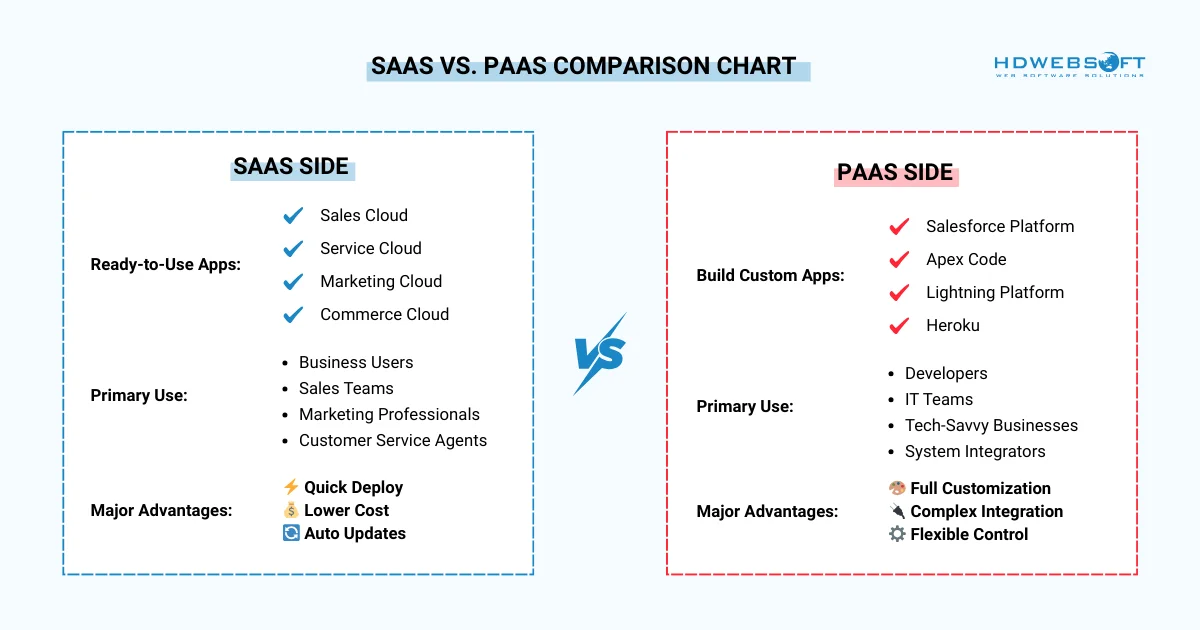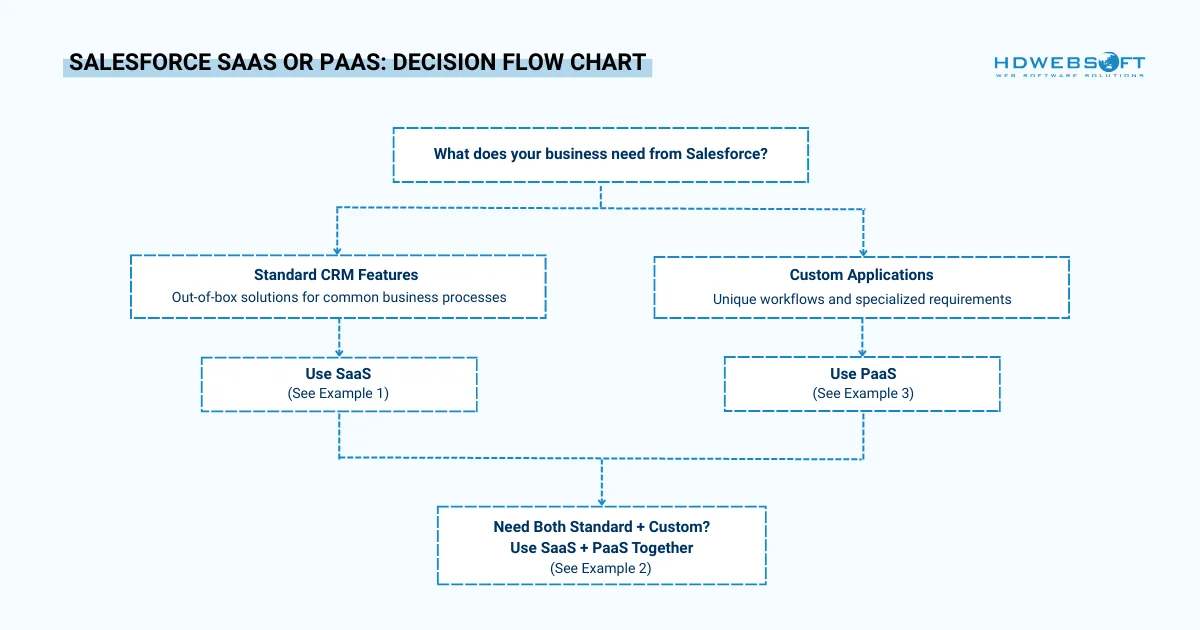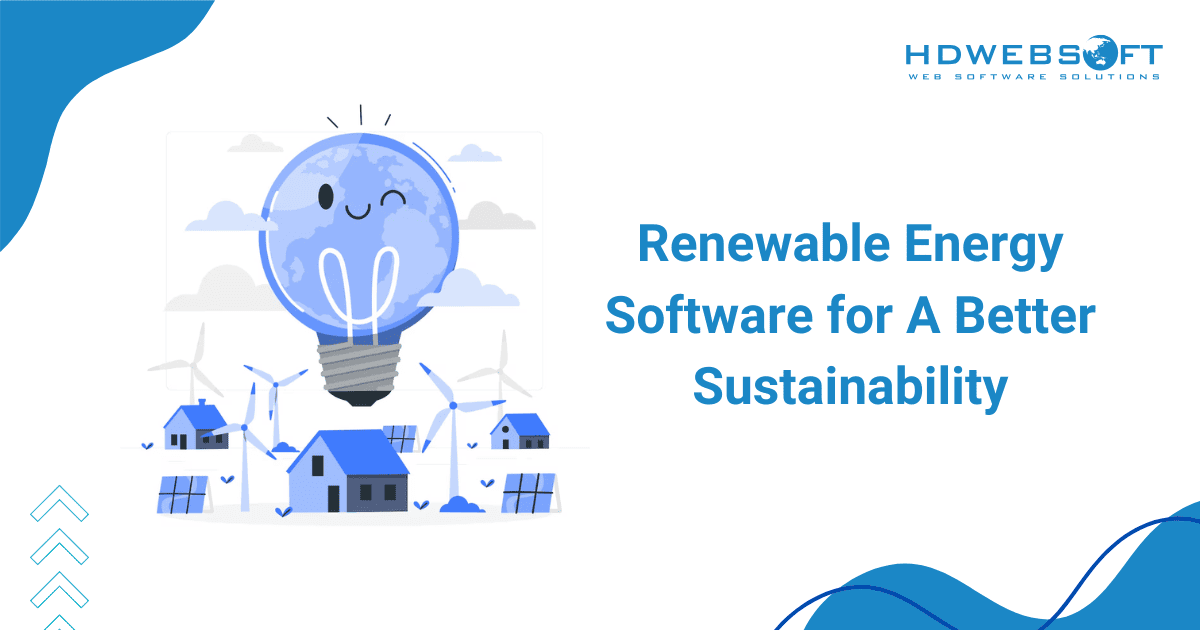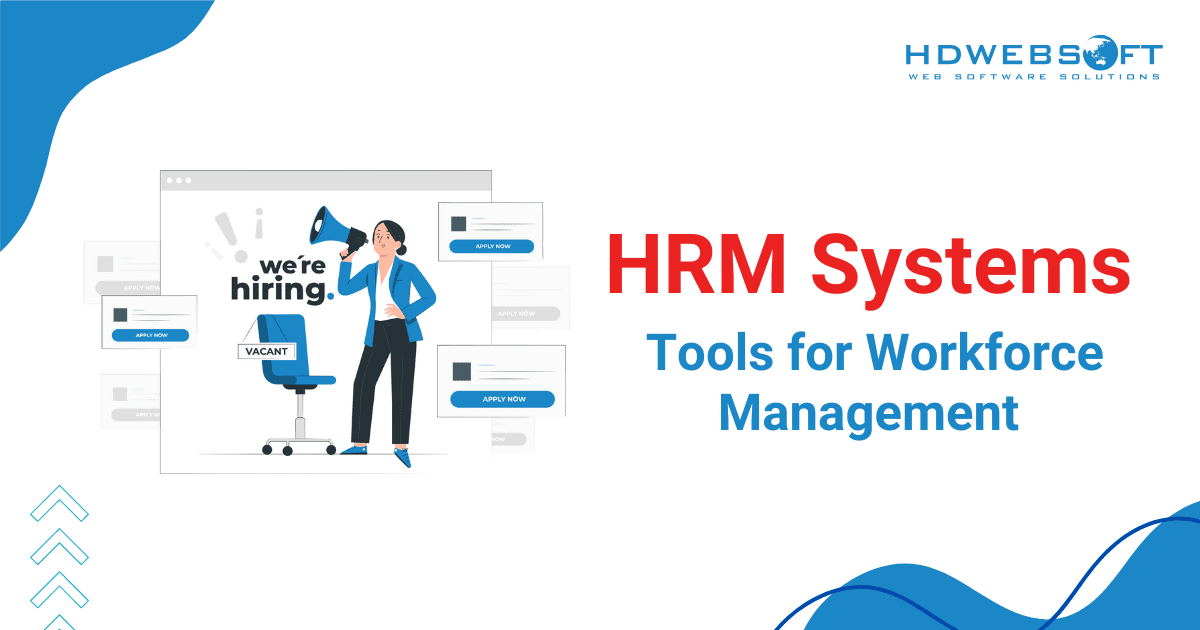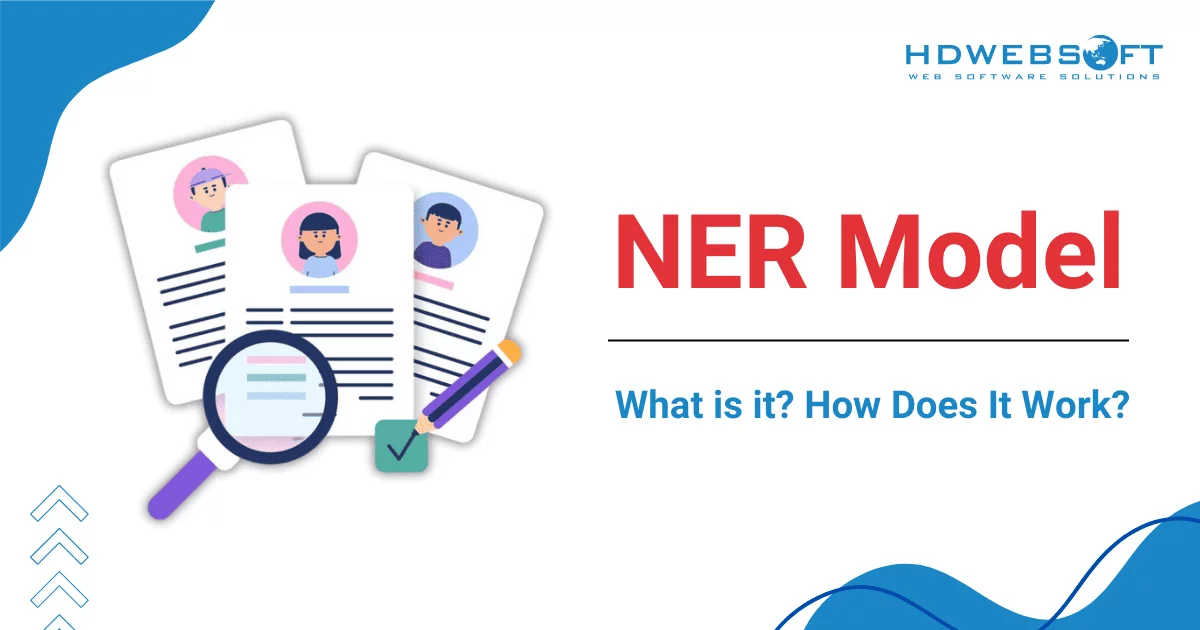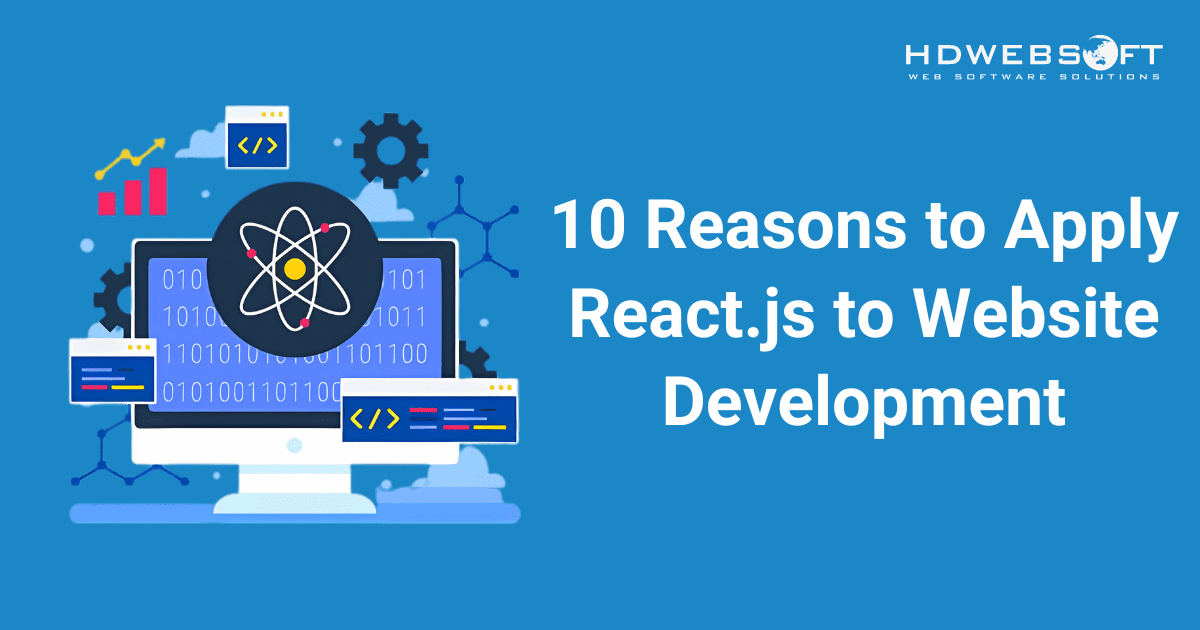
Is Salesforce a SaaS or PaaS? It’s Both
Is Salesforce a SaaS? This question frequently arises among businesses exploring cloud-based solutions for customer relationship management. As companies navigate the complex landscape of cloud computing, understanding whether Salesforce operates as Software-as-a-Service becomes crucial for making informed technology decisions. The answer is yes, Salesforce is fundamentally a SaaS platform. However, it also offers Platform-as-a-Service (PaaS) capabilities that enhance its versatility.
Throughout this article, we’ll explore what makes Salesforce a leading SaaS provider and examine its Salesforce SaaS or PaaS characteristics. We’ll help you understand how SFDC in Salesforce delivers value to businesses worldwide. By the end, you’ll have a comprehensive understanding of Salesforce’s cloud service model and how it can benefit your organization.
- 1) Understanding SaaS (Software as a Service)
- 2) Understanding PaaS (Platform as a Service)
- 3) Is Salesforce a SaaS? The Answer
- 4) Salesforce as a PaaS Provider
- 5) Salesforce SaaS or PaaS? Understanding the Dual Nature
- 6) Benefits of Salesforce as Both SaaS and PaaS
- 7) Real-World Use Case Scenarios
- 8) How HDWEBSOFT Can Help You
- 9) In A Nutshell
Understanding SaaS (Software as a Service)
In order to understand is Salesforce a Saas, let’s dive into a comprehensive understanding of Software as a Service.
What Defines SaaS?
SaaS is a cloud computing model in which applications are hosted by a service provider and made available to customers over the internet. Instead of purchasing, installing, and maintaining software on individual computers or servers, users simply access applications through a web browser with a subscription-based payment model. Consequently, this delivery method eliminates the need for complex hardware infrastructure and reduces the IT burden on organizations.
Prime examples
Popular examples of SaaS applications include:
- Google Workspace for productivity.
- Dropbox for file storage.
- Slack for team communication.
- Salesforce for customer relationship management.
These platforms share common characteristics. They’re accessible from anywhere with an internet connection, automatically updated by the provider, and scaled easily based on user needs.
Additionally, SaaS solutions typically operate on a multi-tenant architecture. It’s where multiple customers share the same infrastructure while maintaining data separation and security.
Core benefits
When exploring is Salesforce a SaaS, we need to acknowledge the compelling benefits of adopting SaaS for modern businesses.
First, it significantly reduces upfront costs since there’s no need to invest in expensive hardware or software licenses. Second, automatic updates ensure users always have access to the latest features and security patches without manual intervention. Third, the subscription model provides predictable operational expenses and flexibility to scale up or down based on business requirements.
Understanding PaaS (Platform as a Service)
We have explored SaaS; now it’s time to take a stand from a Platform as a Service perspective.
What Defines PaaS?
Platform-as-a-Service provides a complete development and deployment environment in the cloud. It provides the infrastructure and tools needed to build, test, and run applications.
Unlike SaaS, which delivers ready-to-use software, PaaS provides developers with a framework to create custom applications without managing the underlying infrastructure. This model handles servers, storage, networking, databases, middleware, and development tools, allowing developers to focus exclusively on coding and innovation.
Prime examples
To better understand is Salesforce a SaaS, we should also note down PaaS examples to distinguish from SaaS ones:
- Heroku for application hosting.
- Microsoft Azure App Service for building web applications.
- Google App Engine for scalable app development.
- AWS Elastic Beanstalk for deploying applications.
Furthermore, these platforms offer pre-built components, APIs, and development frameworks that accelerate the application development lifecycle. Meanwhile, it maintains flexibility and control over the final product.
Core advantages
The advantages of PaaS are particularly valuable for organizations with development needs. It dramatically reduces development time by providing ready-to-use components and eliminating the need for infrastructure setup.
Moreover, PaaS platforms offer built-in scalability, robust integration capabilities, and collaborative tools that enable distributed teams to work efficiently. Cost savings emerge from not having to purchase, configure, or maintain physical servers and development environments.
Is Salesforce a SaaS? The Answer
Salesforce as a Premier SaaS Provider
So, is Salesforce a SaaS? Absolutely, and it’s one of the most recognized SaaS platforms in the world. Salesforce pioneered the SaaS CRM model when it launched in 1999. Since then, it has fundamentally changed how businesses access and use customer relationship management software.
Rather than requiring companies to install bulky software on their own servers, Salesforce chose a different path. The platform delivers its entire suite of applications through the cloud, accessible via any web browser with an internet connection.
Subscription-Based SaaS Model in Action
The flagship Salesforce CRM exemplifies the SaaS model perfectly. Organizations subscribe to Salesforce on a per-user, per-month basis, gaining immediate access to powerful CRM functionality without any software installation.
Furthermore, all data resides securely in Salesforce’s cloud infrastructure, automatically backed up and protected. Updates and new features roll out seamlessly without disrupting operations or requiring manual upgrades from IT teams.
Transforming Business Operations Through Cloud Accessibility
This cloud-based approach has transformed business operations worldwide. Sales teams can access customer information from their smartphones while meeting clients. At the same time, service representatives can view complete customer histories from any location. Similarly, marketing professionals can launch campaigns and track results in real-time.
Consequently, this accessibility and flexibility represent the core value proposition of is Salesforce a SaaS solution. It enables productivity and collaboration regardless of physical location.
The Evolution of Salesforce as a SaaS Pioneer
The Revolutionary “No Software” Campaign
When Salesforce launched in 1999, the enterprise software landscape was dominated by expensive, complex on-premise systems that required significant IT infrastructure and lengthy implementation cycles. Marc Benioff and his co-founders challenged this status quo with a radical idea: delivering CRM software entirely through the internet. Their iconic “No Software” marketing campaign featured a logo with the word “software” crossed out inside a red circle. As a matter of fact, it directly challenged industry giants like Siebel, Oracle, and SAP.
This bold positioning wasn’t just marketing. It represented a fundamental shift in how businesses would consume technology. At industry conferences, Salesforce even staged mock protests against software, complete with picket signs, creating buzz and controversy. Those were the features that forced the market to take notice of this innovative delivery model.
Disrupting the Traditional Enterprise Software Model
People often ask “is Salesforce a SaaS” because traditional CRM systems were nothing like modern cloud software. Before that, companies had to spend hundreds of thousands or even millions of dollars in software licenses, servers, database infrastructure, and specialized IT staff for maintenance. Plus, implementation projects stretched for months or years, often failing to deliver promised value.
However, Salesforce’s SaaS model demolished these barriers by offering immediate access through a web browser with simple monthly subscription pricing. Thanks to that, small businesses could now afford the same powerful tools previously reserved for enterprises.
This democratization of enterprise software represented Salesforce as a SaaS innovation at its finest. Resultantly, it’s becoming sophisticated technology accessible to organizations of any size. The pay-as-you-go model aligned costs with actual usage, eliminating the risk of massive upfront investments in systems that might become obsolete or underutilized.
Key Milestones in SaaS Leadership
Salesforce’s journey from startup to industry titan often raises the question, “Is Salesforce a SaaS?”. It’s especially formidable when you look at how its early decisions shaped the cloud software market.
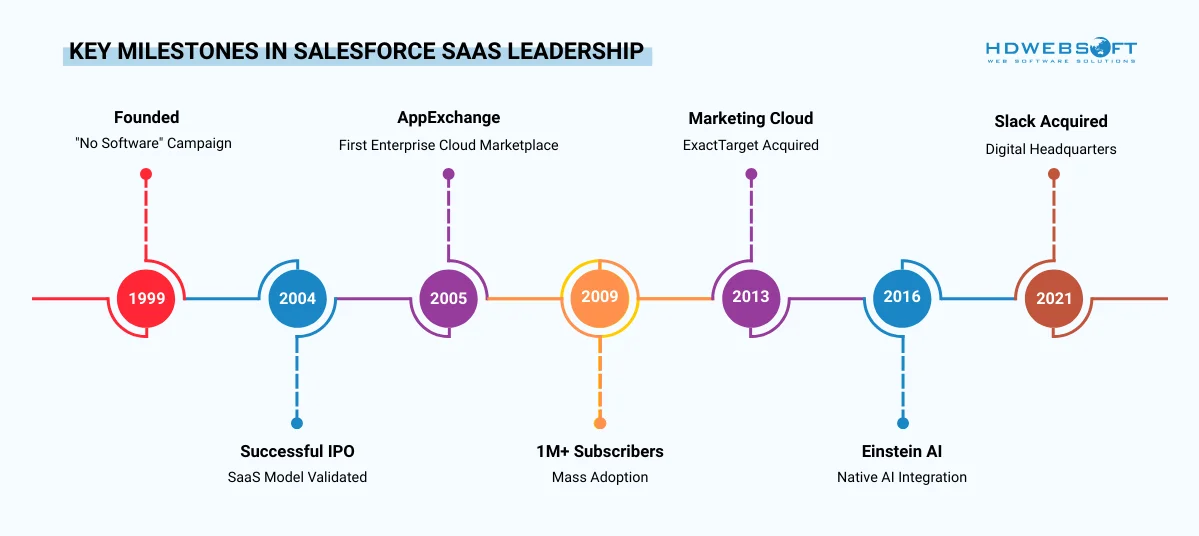
Market Dominance and Industry Impact
Today, when businesses ask, “Is Salesforce a SaaS?” they’re essentially asking about the company that defined the category. Salesforce commands the largest share of the global CRM market, consistently outpacing competitors like Microsoft Dynamics, SAP, and Adobe.
The company’s annual revenue reached $37.9 billion in fiscal year 2025, up 9% year-over-year. Notably, its total remaining performance obligation rose to $63.4 billion by January 31, 2025. This growth demonstrates the scalability and sustainability of the SaaS business model, further solidified by Salesforce’s leadership in AI-powered CRM and strong operating cash flow of $13.1 billion, up 28% over the prior year.
Catalyzing the SaaS Industry Transformation
More importantly, Salesforce’s success inspired an entire generation of SaaS companies across every business function—from human resources (Workday) to collaboration (Zoom) to project management (Asana). The broader SaaS market, now valued at hundreds of billions of dollars annually, owes its existence largely to the path Salesforce pioneered.
By then, legacy software vendors were forced to transform their business models. Microsoft, Oracle, and SAP are all pivoting to cloud-based subscription offerings to remain competitive in a market that Salesforce had fundamentally reshaped.
Salesforce as a PaaS Provider
The Salesforce Platform Advantage
While the answer to “is Salesforce a SaaS” defines its core identity, the company also delivers powerful PaaS capabilities through the Salesforce Platform (formerly Force.com). This enterprise-grade development platform enables developers and businesses to build custom applications that extend Salesforce’s functionality. Or even better, create entirely new solutions that integrate with the Salesforce ecosystem. Unlike ready-to-use SaaS applications, the platform provides the infrastructure, tools, and services necessary for custom application development.
The Salesforce Platform handles all infrastructure management, servers, databases, security, and networking, allowing developers to concentrate on building innovative applications. This PaaS offering proves invaluable for organizations with unique business processes that can’t be addressed by off-the-shelf software. Furthermore, applications built on the Salesforce Platform inherit the same enterprise-grade security, scalability, and reliability that power Salesforce’s SaaS products.
Key PaaS Components
Apex
Serves as Salesforce’s proprietary programming language, it is specifically designed for building business logic and workflows on the platform.
Similar to Java in syntax, Apex is a core part of Salesforce’s PaaS capabilities. Though it often gets overlooked when people focus only on the SaaS side and ask, “Is Salesforce a SaaS?” With the mentioned component, developers can create complex, database-driven applications with strong typing and object-oriented features. This is because it integrates seamlessly with Salesforce’s database and executes on Salesforce’s servers, ensuring optimal performance and security.
Visualforce
Provides a framework for creating custom user interfaces within Salesforce applications. Developers can design pages that match specific business requirements, incorporating custom logic and styling while maintaining integration with Salesforce data. This component-based framework uses a markup language similar to HTML, making it accessible to web developers.
Lightning Platform
Represents the modern evolution of Salesforce’s PaaS capabilities, offering component-based development tools that accelerate application creation. It includes
- Lightning Web Components for building responsive user interfaces.
- Lightning App Builder for drag-and-drop application assembly.
- Lightning Flow for creating automated business processes without code.
This framework emphasizes speed, user experience, and mobile-first design.
Heroku
The tool integration broadens Salesforce’s PaaS capabilities beyond the usual “is Salesforce a SaaS” conversation. This is because it supports applications built in languages like Ruby, Python, Node.js, Java, and PHP.
Acquired by Salesforce in 2010, Heroku provides a flexible platform for developers who prefer working outside the Salesforce-specific environment. All the while, the devs can maintain seamless integration with Salesforce data and services.
Salesforce SaaS or PaaS? Understanding the Dual Nature
The Hybrid Model Explained
When considering Salesforce SaaS or PaaS, it’s important to recognize that Salesforce uniquely delivers both models, creating a hybrid solution that addresses diverse business needs. The SaaS components provide ready-to-use applications like Sales Cloud and Service Cloud. Concurrently, the PaaS components offer development platforms for custom solutions.
This dual nature distinguishes Salesforce from competitors who typically focus on one model or the other.
Salesforce SaaS or PaaS: Which Approach Fits Your Business?
The question of Salesforce SaaS or PaaS depends entirely on how an organization uses the platform.
A small business using Salesforce CRM to manage customer contacts and track sales opportunities clearly illustrates why people ask, “Is Salesforce a SaaS?”: It’s a purely SaaS use case. Conversely, a development team building a custom inventory management application on the Salesforce Platform is utilizing PaaS. Simultaneously, many enterprises use both: running standard Salesforce applications while developing custom apps that extend functionality for unique business requirements.
Thus, understanding when to use each approach optimizes your Salesforce investment. Choose SaaS offerings when standard business processes align with available applications, benefiting from faster deployment and lower costs.
On the other hand, opt for PaaS capabilities when facing unique requirements that can’t be met by off-the-shelf solutions. That means you’re accepting longer development timelines in exchange for perfect-fit functionality. Ultimately, the Salesforce SaaS or PaaS decision should be driven by specific business objectives, technical capabilities, and budget considerations.
Benefits of Salesforce as Both SaaS and PaaS
| Category | SaaS Benefits | PaaS Benefits |
| Ease of Use | Immediate access through web browsers with no installation required; intuitive interfaces designed for business users | Development environment ready to use with pre-built components and APIs that accelerate application creation |
| Cost Structure | Predictable subscription fees with no upfront infrastructure investment; pay only for users and features needed | Eliminates infrastructure costs for custom applications; pay for platform usage rather than servers and development environments |
| Maintenance | Automatic updates and patches managed by Salesforce; zero downtime for upgrades | Infrastructure maintenance handled by Salesforce; developers focus solely on application code |
| Scalability | Easily add or remove users and features as business needs change; instant scaling without performance impact | Applications automatically scale with demand; leverage Salesforce’s enterprise infrastructure |
| Security | Enterprise-grade security managed by Salesforce; compliance certifications maintained; regular security updates | Inherits Salesforce’s security model; built-in features for authentication, authorization, and encryption |
| Customization | Configuration options through point-and-click tools; limited to available features and settings | Complete control over application functionality; build exactly what business processes require |
| Development Speed | Immediate deployment; no development time required | Faster than traditional development due to pre-built services; reduced time-to-market for custom solutions |
| Integration | Pre-built integrations with popular business applications; APIs for custom connections | Seamless integration with Salesforce data and all Salesforce clouds; extensive API ecosystem |
| Updates | New features and improvements are delivered automatically three times per year | Platform enhancements benefit custom applications; APIs remain backward compatible |
Real-World Use Case Scenarios
Example 1: Retail Company Leveraging Pure SaaS
A mid-sized retail company with 200 employees implemented Salesforce Sales Cloud and Commerce Cloud to modernize their customer experience. Before wondering “Is Salesforce a SaaS solution?”, they struggled with disconnected systems. Their e-commerce platform didn’t communicate with their sales database, creating customer service nightmares and missed sales opportunities.
After implementation, sales representatives gained real-time visibility into customers’ online browsing and purchase history, enabling personalized recommendations during phone calls. The marketing team used integrated data to create targeted email campaigns based on customer preferences and behaviors. Customer service representatives accessed complete order histories, resolving issues faster and improving satisfaction scores.
Example 2: Healthcare Provider Using Both Salesforce SaaS or PaaS
A healthcare network with multiple hospitals and clinics needed both standard CRM functionality and specialized applications for patient management that complied with HIPAA regulations. They subscribed to Salesforce Health Cloud (SaaS) for basic patient relationship management. Simultaneously, they develop custom applications on the Salesforce Platform (PaaS) for appointment scheduling, lab result tracking, and care coordination.
The Health Cloud SaaS application directly supports the answer to “is Salesforce a SaaS” by giving care teams patient timelines, care plans, and communication tools out of the box. Meanwhile, their development team built custom PaaS applications that integrated with their electronic health records system, creating a unified view of patient information across all systems. These custom apps included features like automated appointment reminders, patient portal integration, and specialized workflows for different medical specialties.
Example 3: Technology Startup Building on PaaS
A fast-growing software startup needed a custom project management and billing system that integrated seamlessly with their customer data in Salesforce. Rather than purchasing separate project management software and attempting complex integrations, they chose to build a custom application entirely on the Salesforce Platform, demonstrating the Salesforce SaaS or PaaS flexibility.
Their development team used Apex to create custom business logic for project tracking, resource allocation, and automated billing based on project milestones. Lightning Web Components provided a modern, responsive user interface that matched their brand identity. The custom application accessed all Salesforce CRM data natively, ensuring sales opportunities, customer information, and project details remained synchronized without additional integration work.
How HDWEBSOFT Can Help You
Navigating the complexities of Salesforce SaaS or PaaS implementation requires expertise, strategic planning, and technical proficiency. HDWEBSOFT stands as your trusted partner in maximizing Salesforce’s potential for your business, offering comprehensive Salesforce development services tailored to your unique requirements. Our team of certified Salesforce professionals brings extensive experience in both SaaS configuration and PaaS custom development. You will leverage the right approach for each business challenge.
HDWEBSOFT’s commitment extends beyond initial implementation. We provide continuous support to ensure your Salesforce environment evolves with your business, incorporating new features, optimizing performance, and addressing emerging requirements. With HDWEBSOFT as your Salesforce development partner, you gain not just technical expertise but strategic guidance that helps you realize measurable ROI from your Salesforce investment.
In A Nutshell
So, is Salesforce a SaaS? The answer is definitely yes. Salesforce remains the premier SaaS CRM platform that revolutionized how businesses manage customer relationships. However, its PaaS capabilities through the Salesforce Platform add remarkable versatility. Organizations are able to extend functionality and build custom applications that address unique business requirements. This hybrid model, encompassing both Salesforce SaaS or PaaS dimensions, positions Salesforce as a comprehensive cloud solution that adapts to diverse organizational needs.
As cloud computing continues to reshape business technology, Salesforce’s dual nature as both SaaS and PaaS ensures it remains at the forefront of digital transformation. Ultimately, it helps organizations of all sizes compete effectively in an increasingly digital marketplace.





